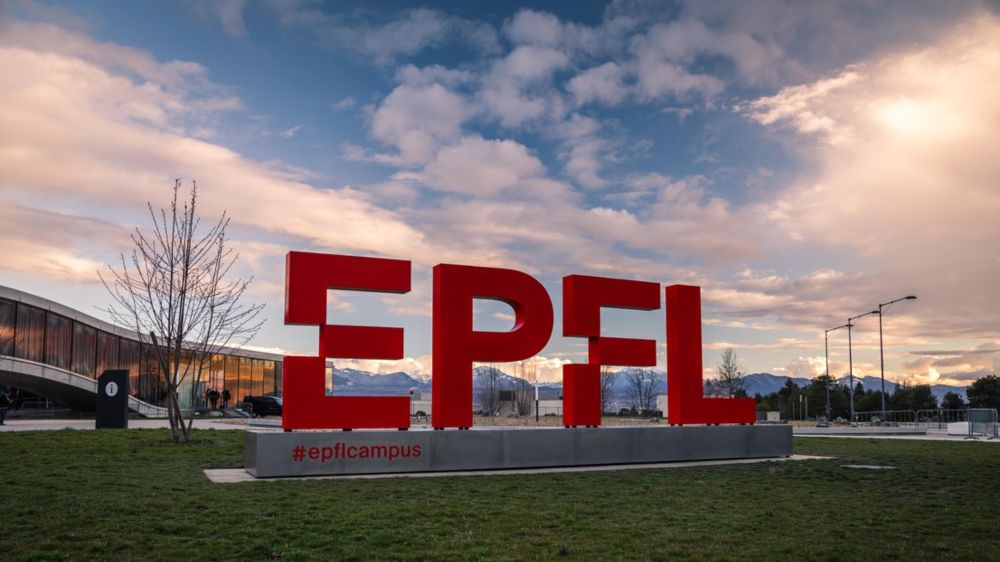🚨 Only 15 days left! 🚨
A quick reminder that the deadline to apply for our PhD position is approaching fast. The 1st of November is the last day to apply!
🔁 Please share this post widely in your networks — it really helps us reach great candidates!
16.10.2025 15:22 — 👍 1 🔁 1 💬 0 📌 0
Unfortunately, the operational stability was reduced, which we provide preliminary investigations of, and discuss potential avenues for improvement. It’s critical to bring light to these issues!
13.10.2025 07:16 — 👍 0 🔁 0 💬 0 📌 0
More interestingly, the surface passivations homogenized the surface, This enabled 60cm2 spin coated perovskite-silicon tandem solar cells with certified PCE of 28.9%! Likely there are better options for scalability, but I never believed this level would be possible with spin-coated absorbers.
13.10.2025 07:16 — 👍 0 🔁 0 💬 1 📌 0
We find PCl has a surface dipole that helps align the bands of the C60 and perovskite and induces a field effect passivation. Combining both passivations lead to certified Vocs >2V and the stack actually improves the PLQY, making this a passivating contact.
13.10.2025 07:16 — 👍 0 🔁 0 💬 1 📌 0
In this system, we find that pfbpa can chemically passivate surface defects, increasing the plqy of bare films. There may also be losses that come from new states arising from the interface of two materials, and other losses coming from poor band alignment of the perovskite and fullerene absorbers.
13.10.2025 07:16 — 👍 1 🔁 0 💬 1 📌 0
There is more than one kind of interfacial loss. One is surface defects that come from, for example, surface defects coming from unsatisfied bonds at the surface.
13.10.2025 07:16 — 👍 0 🔁 0 💬 1 📌 0
The core of the paper is the investigation of perfluorobenzenylphosphonic acid (pfbpa) and piperazinium chloride (PCl) as surface passivation molecules in perovskite solar cells.
13.10.2025 07:16 — 👍 0 🔁 0 💬 1 📌 0

Power conversion efficiency of tandem devices fabricated in the presented study versus device area. The 1cm2 device has over 31%, the 4cm2 device over 30% and the 60 cm2 device 28.9%. On top are photographs of the mentioned devices.
Kerem pushed the limit of perovskite/silicon tandem solar cells once more!
www.nature.com/articles/s41...
wafer-scale homogeneous passivation enabled 60cm2 tandem devices with 29% efficiency! #tandem #solar #pv #perovskite
12.10.2025 17:18 — 👍 3 🔁 1 💬 0 📌 0


A full circle moment: presenting the results of one of the research projects I came to Switzerland to join 3 years ago.
Our poster was featured at the ‘congress on trends in medical mycology’ and the ‘annual meeting of the swiss society of infectious diseases’, where I also gave a presentation.
26.09.2025 15:56 — 👍 3 🔁 1 💬 2 📌 0
That’s my girl!!! Always so proud of you ♥️
26.09.2025 17:58 — 👍 1 🔁 1 💬 0 📌 0
Really cool work! Congratulations 🎉
24.09.2025 19:38 — 👍 1 🔁 0 💬 0 📌 0
Andddd it's now out in Advanced Materials!
doi.org/10.1002/adma...
Here, we show a new method of transforming hydrogels into ceramics and metals with low conversion shrinkages and high material densities. (1/7)
#chemsky #matsky
24.09.2025 19:34 — 👍 23 🔁 3 💬 1 📌 1

A set of elevator buttons, one of which is labeled "1/0".
Every mathematical instinct I have would tell me not to push THAT button.
18.09.2025 18:46 — 👍 57 🔁 7 💬 6 📌 0
Looking forward to reading it when it’s out 😉
10.09.2025 12:36 — 👍 1 🔁 0 💬 0 📌 0
Congratulations for making it through the marathon review process! Great work!
10.09.2025 12:35 — 👍 1 🔁 0 💬 1 📌 0
Perovsky is such a good tag, will be using this from now on!
05.09.2025 13:36 — 👍 1 🔁 0 💬 0 📌 0
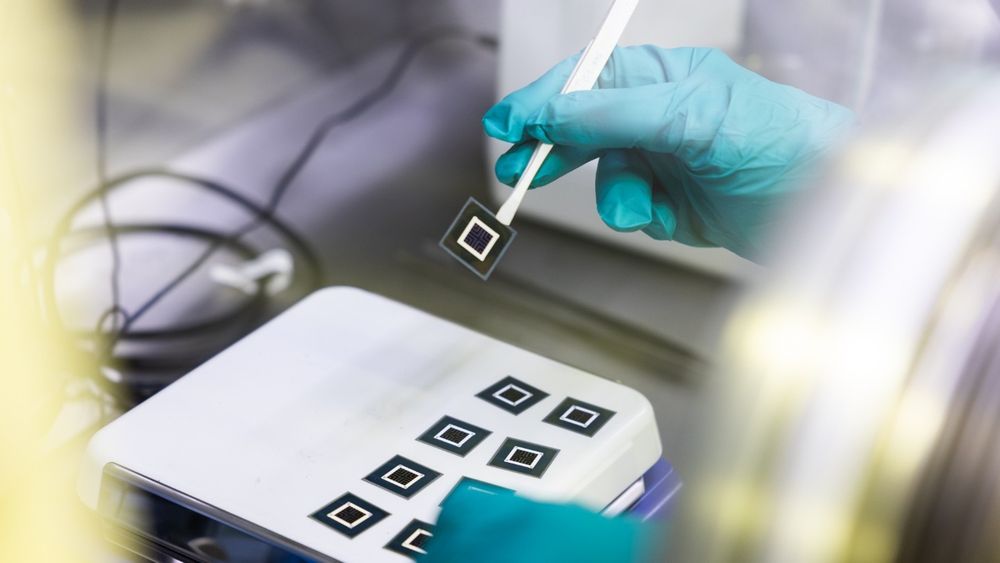
Scratching the surface is not enough!
This should be a guiding principle of good science - and politics 😉 .
But it also applies to #photovoltaics!
www.ise.fraunhofer.de/en/press-med...
© Universität Freiburg / Foto: Silvia Wolf
05.09.2025 08:17 — 👍 8 🔁 3 💬 3 📌 0
I accomplished something today that I’ve been working towards for 9 years 🤩🤩🤩 such a surreal feeling
06.08.2025 16:09 — 👍 1 🔁 0 💬 0 📌 0
Out now in ACS Materials Letters pubs.acs.org/doi/10.1021/...
We developed a method to fabricate composites with volumetric additive manufacturing (VAM). The study was led by Yiming Ji, a grad student in my group, with support from @xolo3d.bsky.social
Here's a little 🧵(1/8)
10.07.2025 15:19 — 👍 9 🔁 3 💬 1 📌 0
Congratulations Daryl! I’m looking forward to seeing it out in the wild 😁
05.07.2025 07:47 — 👍 1 🔁 0 💬 0 📌 0
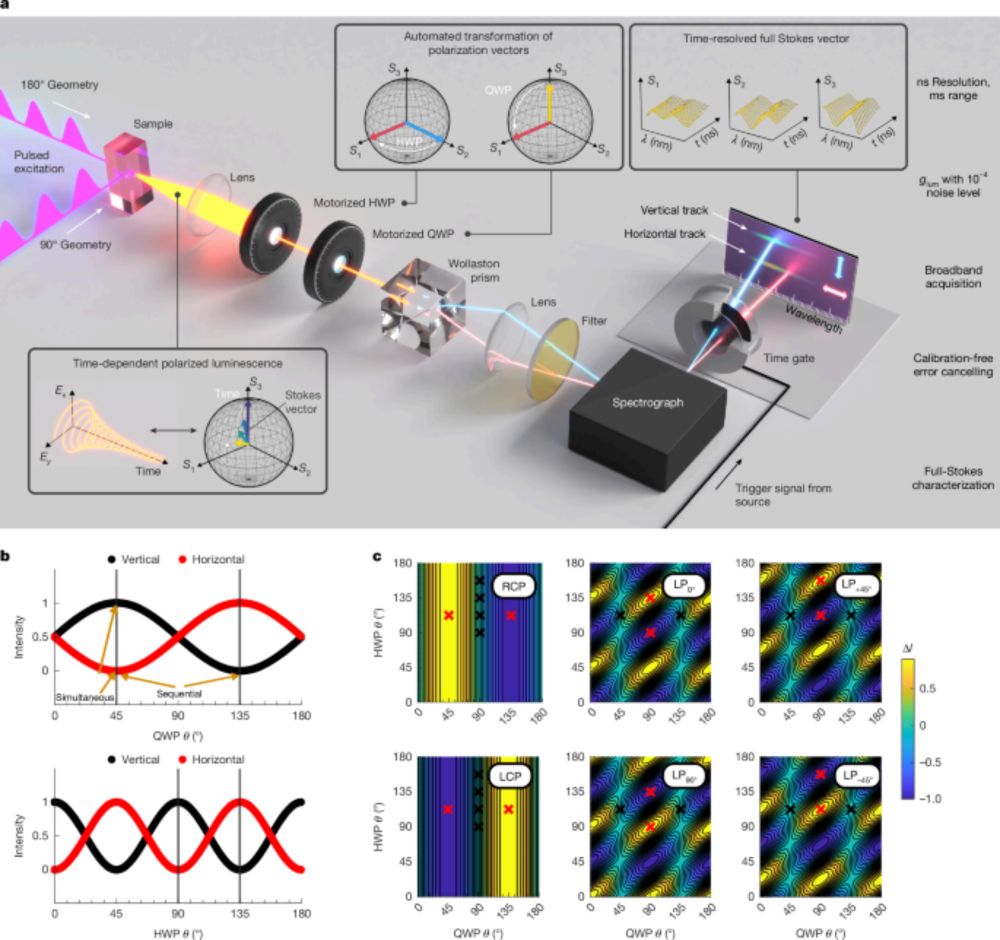
Broadband transient full-Stokes luminescence spectroscopy - Nature
A high-sensitivity, broadband, transient, full-Stokes spectroscopy setup is demonstrated, which can detect quickly varying small signals from chiral emitters.
Excited to share in @nature.com today: Broadband transient full-Stokes luminescence spectroscopy - detecting the most subtle changes in light polarization over time with unprecedented sensitivity. Grateful for the team that made this possible!😊 www.nature.com/articles/s41... #chirality #light
26.06.2025 06:23 — 👍 41 🔁 14 💬 0 📌 0
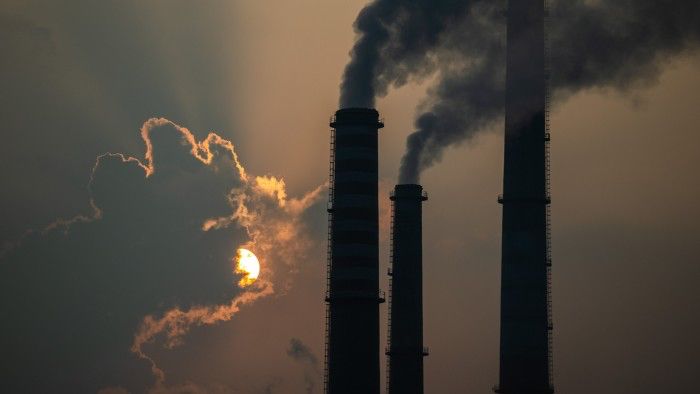
Earth set to exhaust ‘carbon budget’ within 3 years as Paris hopes fade
Goal of limiting warming to 1.5C looks increasingly out of reach, study finds
Say goodbye to 1.5°C. But remember, the next target is 1.51°C and not 2°C. We need to keep fighting.
Every tonne of CO₂ emitted makes the job of future CO₂ removal harder, and every 0.01°C of temperature increase makes the world more chaotic and dangerous.
18.06.2025 22:25 — 👍 654 🔁 236 💬 15 📌 13
As my colleagues said "2+ years and it's never been more relevant" - I hope to work with many of you to show the true potential of this technology.
13.06.2025 17:28 — 👍 2 🔁 1 💬 0 📌 0

Oriented 2D Ruddlesden-Popper metal halides by pulsed laser deposition - npj 2D Materials and Applications
npj 2D Materials and Applications - Oriented 2D Ruddlesden-Popper metal halides by pulsed laser deposition
Can we grow #layered #low #dimensional #halides with #PLD?⚡And use this to make #stable 2D/3D #perovskite #heterostructures? The answers in our recently published work 👇.
www.nature.com/articles/s41...
@erc.europa.eu. Great job Junia and collaborators from SAV, FZU and ITQ @pablopboix.bsky.social
16.06.2025 08:35 — 👍 6 🔁 2 💬 0 📌 1
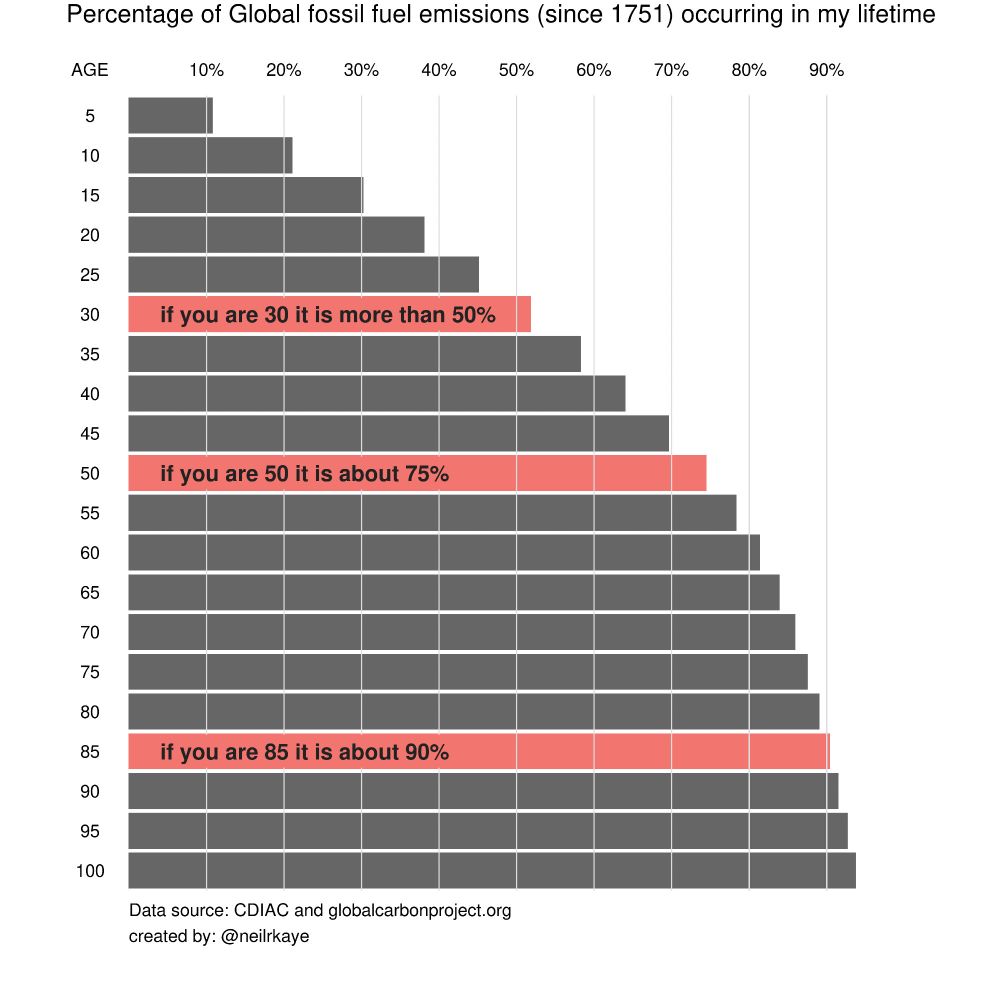
A horizontal bar chart titled "Percentage of Global fossil fuel emissions (since 1751) occurring in my lifetime." The chart shows how much of the total historical global fossil fuel emissions have occurred within the lifetime of individuals of different ages, from 5 to 100 years old. The vertical axis on the left lists ages in increments of 5 years, from age 5 at the top to age 100 at the bottom. The horizontal axis represents the percentage of fossil fuel emissions, marked in 10% increments from 10% to 90%.
The black bars represent the proportion of fossil fuel emissions that have occurred during each age group's lifetime. The bars increase in length as the age increases, meaning older individuals have lived through a larger percentage of the cumulative emissions since 1751.
Three specific age groups are highlighted with red bars and white text annotations:
Age 30: "if you are 30 it is more than 50%"
Age 50: "if you are 50 it is about 75%"
Age 85: "if you are 85 it is about 90%"
The source of the data is cited at the bottom: "CDIAC and globalcarbonproject.org." The graphic is credited to "@neilrkaye."
If you think climate change has gotten worse during your lifetime, you're right and there's a good reason.
If you're Gen X like me, more than 3/4 of fossil fuel CO₂ emissions have occurred in your lifetime. Even if you're a Millennial, it's at least half.
📊: @neilrkaye.bsky.social
10.06.2025 10:22 — 👍 1516 🔁 746 💬 32 📌 52
Is the US losing its place as the world leader in science?
Will the double whammy of cracking down on immigrants and defunding research weaken the US as a research hub?
What makes a science superpower? Funding, freedom, and the world’s brightest minds.
You can’t lead the world in science while banning immigrants and defunding discovery. The Trump admin is sabatoging the future of U.S. science.
zurl.co/7P2av
08.06.2025 10:54 — 👍 168 🔁 45 💬 5 📌 1
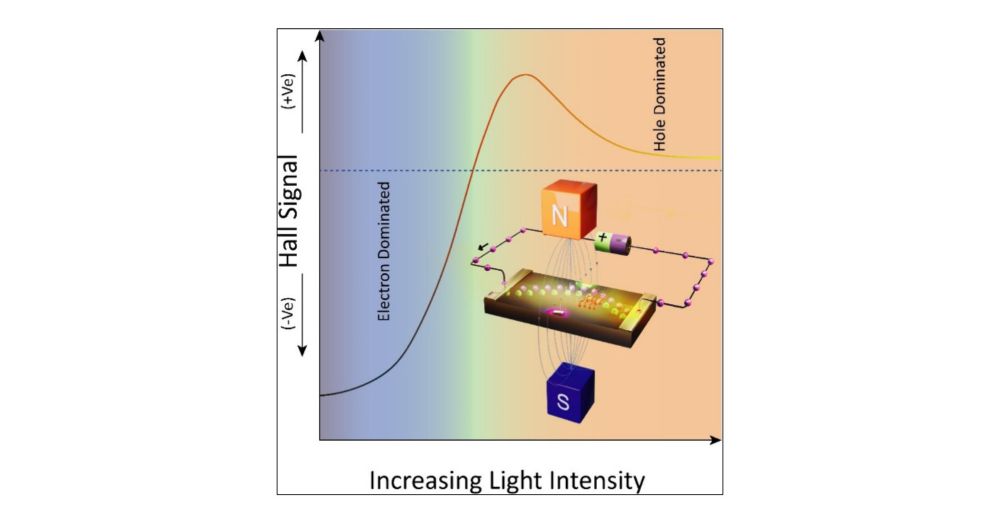
How to Reliably Measure Carrier Mobility in Highly Resistive Lead Halide Perovskites with Photo-Hall Experiment
Mobility measurements in highly resistive methylammonium lead iodide (MAPI) are challenging due to high impedance, ion drift, and low mobility. We show that we can address the challenge using intensity-dependent photo-Hall measurements. The key is an improved photo-Hall setup, which enables reliable Hall measurements in the dark and under low-intensity illumination. By tuning the illumination over 4 orders of magnitude, we get the additional information to simultaneously extract hole mobility, electron mobility, and background doping. For the first time, we show that a MAPI single crystal, exhibiting n-type behavior in the dark, can show p-type behavior under light due to the difference in hole and electron mobility. The data partly explain the variability in mobility reported in the literature. We show that one can erroneously extract any mobility from 0 to 25 cm2/(V s) if we restrict the experiment to a small range of illumination intensities. For our MAPI (310) crystal, the measured hole and electron mobilities are 40 and 25.5 cm2/(V s), respectively.
How to Reliably Measure Carrier Mobility in Highly Resistive Lead Halide Perovskites with Photo-Hall Experiment | ACS Energy Letters pubs.acs.org/doi/10.1021/...
06.06.2025 18:04 — 👍 5 🔁 1 💬 0 📌 0
Digital chemist & chemistry automation nerd | Lives in a historical canalside cottage | "Aggressively sciency" | Views are mine | She/they. Macclesfield, UK
Husband and father. Proudly serving as Illinois’ 43rd governor.
Official Account for the Office of California Governor Gavin Newsom.
Building a #CaliforniaForAll.
🔗 linktr.ee/CAgovernor
Our mission is to ensure that more electricity is generated by solar than any other energy source by 2030 ☀️
Learn more at https://solarpowereurope.org/
ICMUB (institut de chimie moléculaire de l'Université de Bourgogne)
Université Bourgogne Europe / CNRS / Dijon, France
https://icmub.ube.fr/
Human Doctor • Toxicology • Addiction • Emergency • #WTFentanyl & more often just WTF • drugs are misunderstood but people are misunderstood more • he/him • YouTube.com/@RyanMD • #MedSky
scientist at UC Berkeley inventing advanced genomic technologies
lover of molecules, user of computers
https://scholar.google.com/citations?user=63ZRebIAAAAJ&hl=en
nanoGe conferences are worldwide events that cover cutting-edge scientific research topics. nanoGe is managed by Fundació Scito.
Have a look at our website: https://www.nanoge.org/nanoGe-scientific-conferences
A tool for simulating organic/Perovskite thin film devices. 🔬🌈 Download: https://oghma-nano.com Youtube: http://tinyurl.com/y678weae Previously called #gpvdm. Run by: @rcimackenzie Durham, UK
Professor of Chemistry at University of Basel, Switzerland
Nanoscale enthusiast and #ERCCoG supported research group leader at Institute for Photovoltaics at Uni Stuttgart #SPM #KPFM #perovskite #Solarcells, #hydrovoltaics...
www.weber-nano.com
Research group, led by Michael Saliba, exploring novel materials for #solar cells & more for #sustainable energy
Photo(electro)chemistry and Photovoltaics Research at Imperial College London.
#solarfuels #solarenergy #photovoltaics
@imperialchemistry.bsky.social
https://www.imperial.ac.uk/durrant-group/
Journalist, lawyer, NYT-bestselling Trump and Musk biographer, songwriter (Hounds, The Rangers), former CNN & BBC analyst, retired journalism prof.
👤: sethabramson.net/bio
⚖️: sethabramson.substack.com
🕹: retrostack.substack.com
🎶: houndsmusic.substack.com
☀️ Thiebes rhymes with Phoebus
⚗️ physical chemist / chemical physicist
🔬 time-resolved spectro/microscopy
📊 data science & analytics
🌟 lifelong learner
🎯 banner: laser interference
CERN is the European laboratory for particle physics, home to the Large Hadron Collider.
linktr.ee/CERN_official
Head of Sci/cofounder at futurehouse.org. Prof of chem eng at UofR (on sabbatical). Automating science with AI and robots in biology. Corvid enthusiast
Assist. Prof'ing in Data Vis & Sleuth'ing
"Troublemaker for truth" @ABCaustralia
"Dogged critic" @ScienceMagazine
@TEDx speaker #openscience #vegan
Solar (tech/finance/project) news.
Consult/Develop/Construct: https://commercialsolarguy.com/
Editor: https://pv-magazine-usa.com/author/johnweaver/
Professional: https://www.linkedin.com/in/johnfitzgeraldweaver
Born 336.74
Cambridge, MA, USA, Earth







